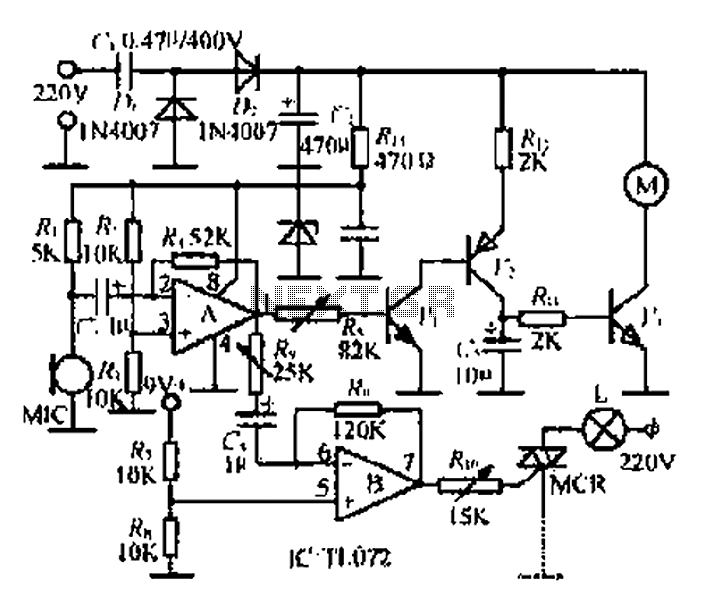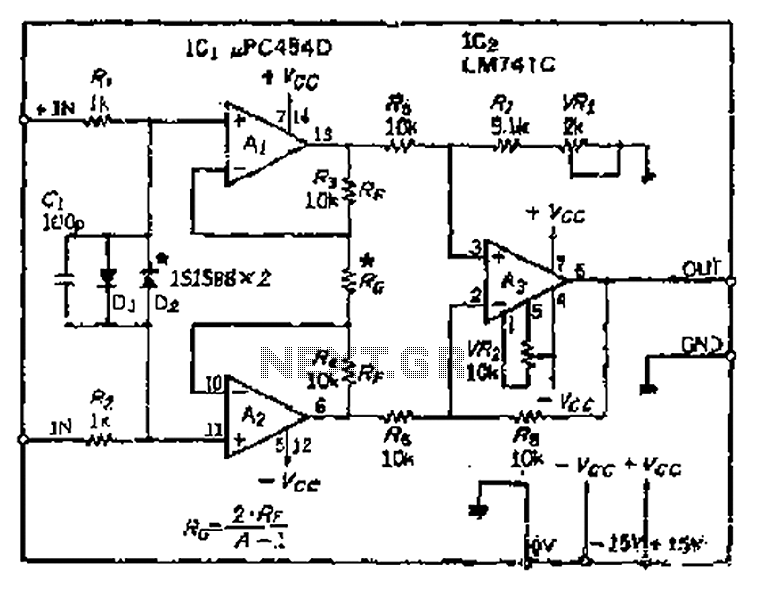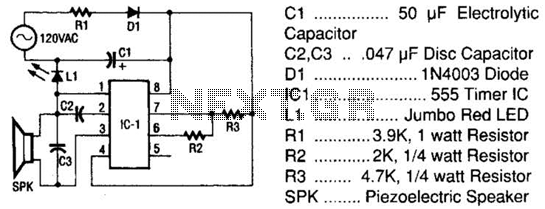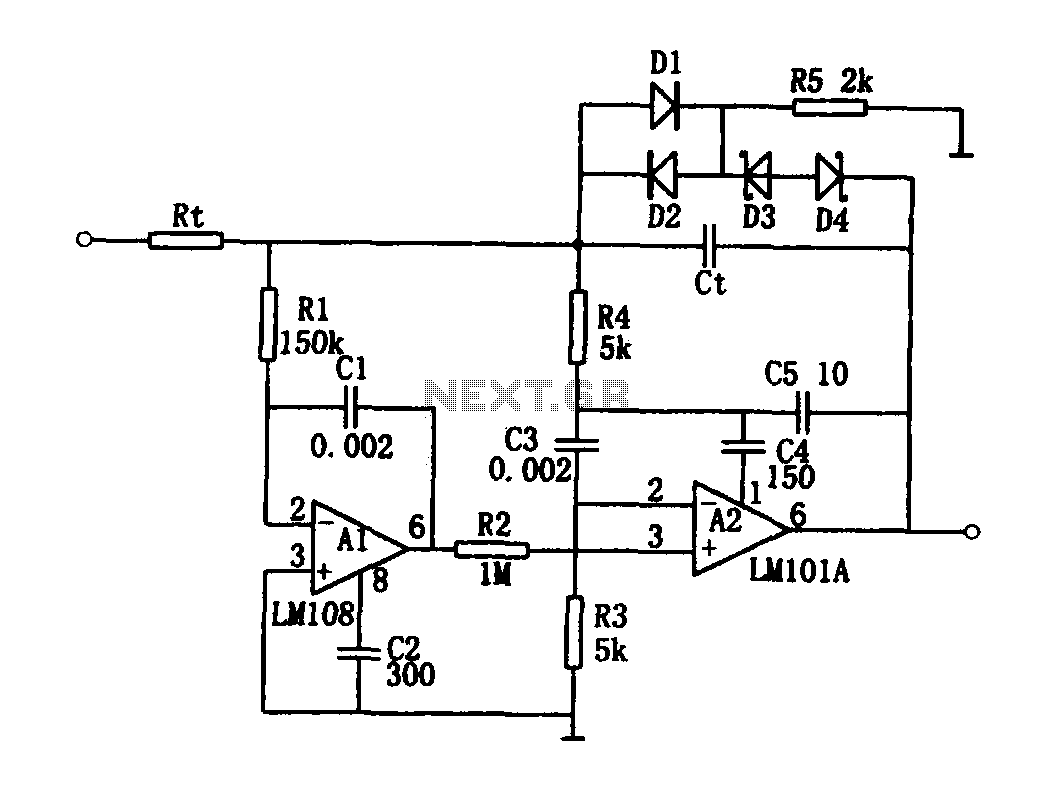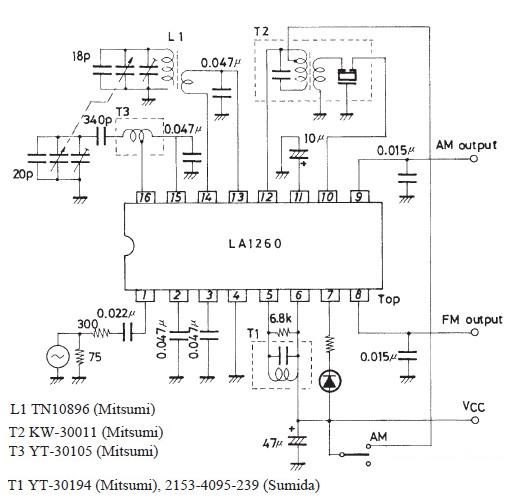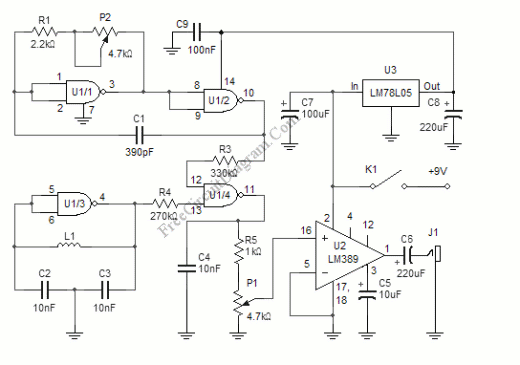
Automatic Car/Vehicle Head Lights Turn Off Circuit

A circuit that can automatically turn off the headlights or lamps of a vehicle after a preset time. This light switching circuit is constructed using a 555 timer integrated circuit (IC).
The described circuit utilizes the 555 timer IC in a monostable configuration to achieve the automatic switching function. In this setup, the 555 timer is triggered by a momentary switch, which can be connected to the vehicle's ignition system or a dedicated switch on the dashboard. Upon activation, the timer begins its timing cycle, which is determined by an external resistor-capacitor (RC) network connected to the timing pins of the IC.
The timing period can be adjusted by selecting appropriate resistor and capacitor values. For instance, the time delay (T) can be calculated using the formula T = 1.1 × R × C, where R is the resistance in ohms and C is the capacitance in farads. This flexibility allows the user to set a delay period ranging from a few seconds to several minutes, depending on the application requirements.
Once the preset time elapses, the output pin of the 555 timer transitions from a high state to a low state. This output can be used to control a relay or a transistor, which in turn disconnects the power supply to the vehicle's headlights or lamps. The relay or transistor must be rated appropriately to handle the current required by the vehicle's lighting system.
Additional components may include a diode across the relay coil to prevent back EMF from damaging the 555 timer when the relay is deactivated, as well as capacitors for power supply decoupling to ensure stable operation of the timer. The circuit can be powered from the vehicle's battery, with considerations for voltage levels and current ratings to ensure reliability and safety.
This automatic headlight switch-off circuit enhances vehicle safety by preventing battery drain and ensuring that lights are not left on inadvertently when the vehicle is parked.A circuit that can turn off head lights/lamps of a car/vehicle automatically after a preset time.This light switching circuit is built using 555 timer IC.. 🔗 External reference
The described circuit utilizes the 555 timer IC in a monostable configuration to achieve the automatic switching function. In this setup, the 555 timer is triggered by a momentary switch, which can be connected to the vehicle's ignition system or a dedicated switch on the dashboard. Upon activation, the timer begins its timing cycle, which is determined by an external resistor-capacitor (RC) network connected to the timing pins of the IC.
The timing period can be adjusted by selecting appropriate resistor and capacitor values. For instance, the time delay (T) can be calculated using the formula T = 1.1 × R × C, where R is the resistance in ohms and C is the capacitance in farads. This flexibility allows the user to set a delay period ranging from a few seconds to several minutes, depending on the application requirements.
Once the preset time elapses, the output pin of the 555 timer transitions from a high state to a low state. This output can be used to control a relay or a transistor, which in turn disconnects the power supply to the vehicle's headlights or lamps. The relay or transistor must be rated appropriately to handle the current required by the vehicle's lighting system.
Additional components may include a diode across the relay coil to prevent back EMF from damaging the 555 timer when the relay is deactivated, as well as capacitors for power supply decoupling to ensure stable operation of the timer. The circuit can be powered from the vehicle's battery, with considerations for voltage levels and current ratings to ensure reliability and safety.
This automatic headlight switch-off circuit enhances vehicle safety by preventing battery drain and ensuring that lights are not left on inadvertently when the vehicle is parked.A circuit that can turn off head lights/lamps of a car/vehicle automatically after a preset time.This light switching circuit is built using 555 timer IC.. 🔗 External reference
